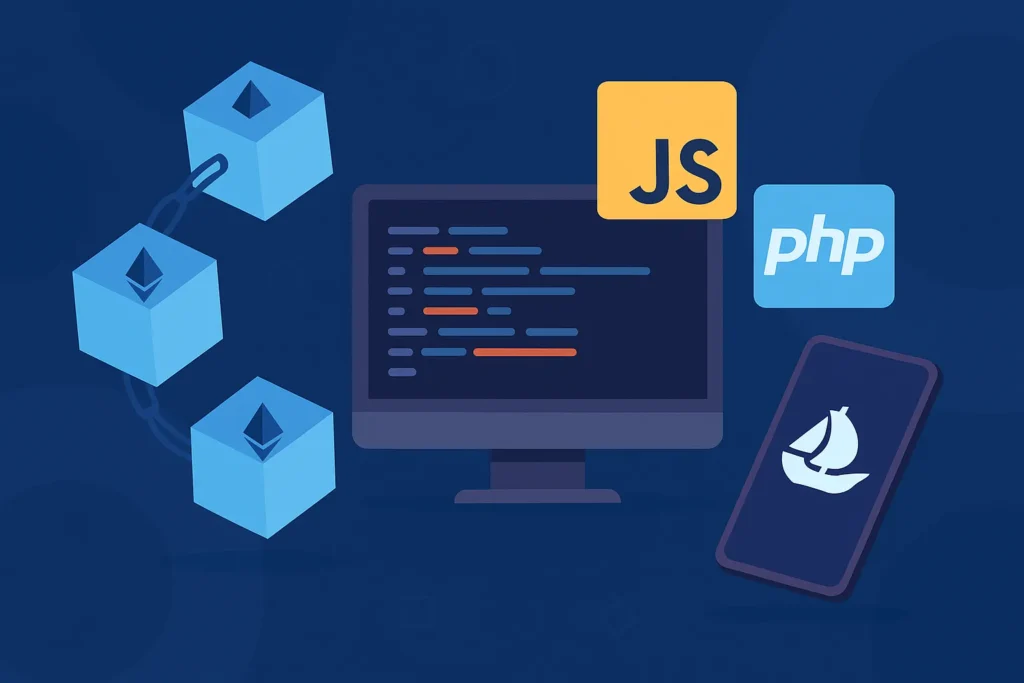Cutting Cloud costs, Cloud cost optimization, Startup cost-cutting strategies, Service provider negotiation tactics, Cloud expense management, Cost-effective business growth.
As global macroeconomic conditions worsen and funding slowdown continues, Indian startups are cutting their spends on an integral part of tech businesses – cloud storage – by renegotiating contracts with service providers like AWS and Google Cloud, multiple startup founders told ET.
1. Cutting Cloud Costs: A Pragmatic Approach
Embracing the cloud provides startups with the flexibility and scalability needed for growth. However, the cost of cloud services can quickly spiral out of control if not managed efficiently. To cut cloud costs, startups should:
- Rightsize Resources: Analyze your usage patterns and select the appropriate instance sizes to avoid over-provisioning.
- Implement Auto-Scaling: Utilize auto-scaling features to dynamically adjust resources based on demand, ensuring you only pay for what you use.
- Leverage Reserved Instances: Commit to longer-term contracts for certain resources, which can lead to significant cost savings.
2. Startup Cost-Cutting Strategies: Practical Tips for Success
Startup success hinges on resourcefulness and strategic decision-making. Consider the following cost-cutting strategies to ensure your startup thrives in a competitive landscape:
- Outsource Non-Core Functions: Engage third-party service providers for non-essential tasks like payroll, HR, and customer support to reduce overhead costs.
- Embrace Open Source Software: Leverage open-source solutions whenever possible to minimize licensing fees without compromising on quality.
- Flexible Workspace Solutions: Opt for co-working spaces or remote work arrangements to lower real estate expenses.
3. Service Provider Negotiation Tactics: Securing the Best Deals
Negotiating with service providers is a crucial skill for startups looking to maximize value. Follow these tactics to strike favorable deals:
- Research and Benchmark: Understand industry standards and prices to negotiate from a position of knowledge.
- Consolidate Services: Bundle services with a single provider to gain leverage in negotiations and potentially secure volume discounts.
- Negotiate Add-Ons and Customization: Seek additional features or customization options at a reduced cost to align services with your specific needs.
4. Cloud Expense Management: Tools and Best Practices
Effective cloud expense management is pivotal in controlling costs. Here are some tools and best practices to consider:
- Cloud Cost Monitoring Tools: Utilize platforms like AWS Cost Explorer, Google Cloud’s Cost Management Tools, or Azure Cost Management to gain visibility into spending.
- Set Budgets and Alerts: Establish budget thresholds and receive alerts when spending approaches or exceeds predefined limits.
- Regularly Review and Optimize: Conduct periodic reviews of your cloud infrastructure to identify areas for optimization and cost reduction.
5. Cost-Effective Business Growth: Balancing Investment and Returns
Achieving sustainable growth while maintaining cost-effectiveness is the ultimate goal for startups. Consider the following steps:
- Focus on Customer Acquisition and Retention: Allocate resources towards strategies that bring in and retain customers, ensuring a steady stream of revenue.
- Invest in Scalable Technologies: Prioritize technologies that can grow with your business without incurring exponential costs.
- Measure ROI and KPIs: Continuously assess the return on investment of various initiatives and adjust strategies accordingly.
By implementing these strategies, startups can navigate the cloud landscape with confidence, driving cost-effective business growth while maintaining a competitive edge. Remember, the key lies in strategic planning, diligent execution, and a commitment to continuous improvement.
In today’s rapidly evolving business landscape, startups are constantly seeking innovative ways to streamline operations and boost profitability. One effective approach gaining traction is the optimization of cloud costs and the renegotiation of deals with service providers. This strategic move not only helps in minimizing expenses but also ensures the efficient utilization of resources. In this blog post, we will delve into some actionable steps startups are taking to achieve this financial edge.
1. Conduct a Thorough Cloud Cost Analysis
Startups looking to cut cloud costs should begin by conducting a comprehensive analysis of their current cloud infrastructure. This involves assessing the usage patterns, identifying redundant services, and evaluating the performance of existing resources. Tools like AWS Cost Explorer and Google Cloud’s Cost Management can provide invaluable insights into spending patterns, allowing businesses to make informed decisions.
2. Embrace Scalability and Elasticity
One of the primary advantages of cloud computing is its scalability and elasticity. Startups can leverage this by adopting auto-scaling features that adjust resources in real-time based on demand. By paying only for the resources they use, businesses can significantly reduce unnecessary expenses associated with overprovisioned resources.
3. Implement Resource Tagging and Automation
Resource tagging is a powerful practice that allows businesses to categorize and track expenses accurately. By assigning tags to various resources, startups can gain granular visibility into their spending, making it easier to allocate costs to specific projects or departments. Furthermore, implementing automation for tasks like shutting down idle instances or optimizing storage usage can lead to substantial cost savings.
4. Explore Reserved Instances and Spot Instances
For startups with predictable workloads, purchasing reserved instances from cloud service providers can be a cost-effective solution. These instances offer significant discounts compared to on-demand pricing. Additionally, utilizing spot instances for non-critical tasks can lead to substantial savings, as they provide access to spare capacity at significantly reduced rates.
5. Engage in Transparent Negotiations with Service Providers
Beyond optimizing cloud expenses, startups can also drive cost reductions by renegotiating deals with their service providers. This involves open and transparent discussions about pricing, performance expectations, and service level agreements. Service providers are often willing to work with startups to find mutually beneficial arrangements that align with their budgetary constraints.
Many of these companies have slashed cloud expenses by 20%-30% while some growth stage startups such as ecommerce platforms Meesho and Dealshare have brought down their cloud expenses by 50%, under pressure to control their cash burn, they said.
This has led to the top three cloud service providers – Amazon Web Services (AWS), Google Cloud Platform and Microsoft Azure – waging pricing wars to lure startups onto their platforms in the current downturn.
Over the past months, several startups have been approached by AWS rivals to switch over for lesser pricing, multiple founders who have been in talks with them confirmed.
In some instances, founders are using pricing quotes received from Google Cloud and Microsoft Azure to renegotiate discounted contracts with AWS, their primary cloud service provider, said one of the founders.

In today’s fast-paced digital landscape, startups often rely on cloud services to power their operations. While the cloud offers immense benefits in terms of scalability and flexibility, it can also lead to spiraling costs if not managed effectively. In this blog post, we’ll explore key strategies for cutting cloud costs, negotiating with service providers, and managing expenses to foster cost-effective business growth.
- Assess Your Cloud Usage and Needs
Before you can start cutting costs, you need to understand where your expenses are coming from. Conduct a thorough audit of your cloud usage. Identify underutilized resources, unnecessary redundancies, and over-provisioned services. This initial assessment sets the stage for informed decision-making.
- Rightsize Your Resources
Once you’ve identified areas of inefficiency, take action to rightsize your resources. This involves adjusting the size and capacity of your cloud instances to match your actual usage. Downsizing or terminating idle resources can lead to significant savings without sacrificing performance.
- Leverage Auto-scaling and Reserved Instances
Implement auto-scaling to dynamically adjust resources based on demand. This ensures you’re not overprovisioning during periods of low activity. Additionally, consider utilizing Reserved Instances for predictable workloads. This option can lead to substantial cost savings compared to on-demand pricing.
- Explore Serverless Architecture
Serverless computing allows you to pay only for the actual compute time used, rather than maintaining a continuously running server. By adopting serverless architecture, you can drastically reduce costs, particularly for sporadically used services.
- Utilize Cost Management Tools
Leverage cloud cost management tools and platforms that provide insights into your spending patterns. Services like AWS Cost Explorer, Google Cloud’s Cost Management tools, and Azure Cost Management can offer invaluable visibility and recommendations for optimization.
- Startup-Specific Cost-Cutting Strategies
Startups often have unique needs and challenges. Consider implementing strategies tailored to your startup, such as:
- Minimum Viable Product (MVP) Approach: Focus on essential features to get to market quickly, reducing initial infrastructure costs.
- Outsource Non-Core Functions: Leverage third-party services for non-core functions like customer support or HR, reducing the need for additional cloud resources.
- Negotiate with Service Providers
Don’t be afraid to negotiate with your cloud service providers. As a startup, you might be eligible for special pricing or discounts. Additionally, explore different billing models or commitment-based plans that align with your budget and growth projections.
- Implement Continuous Monitoring and Optimization
Cloud optimization is not a one-time task. Set up continuous monitoring of your cloud environment and regularly review your usage patterns. This proactive approach allows you to make adjustments as your business evolves.
- Prioritize Security and Compliance
While focusing on cost-cutting, it’s crucial not to compromise on security and compliance. Implementing strong security measures from the outset can prevent costly breaches down the line.
Cybersecurity ecosystem
The Data Security Council of India has forecast that the cybersecurity ecosystem will expand up to a point where nearly one million professionals will be required by 2025. Additionally, the demand for cloud security skills is estimated to grow by 115% between 2020 and 2025, representing almost 20,000 job openings, Narayan added.
An extensive exercise in reskilling and/or upskilling the existing workforce, believe staffing experts, is one of the ways that telcos can future proof their work.
Indian mobile phone operators are expected to at least double their investments on network security with the 5G roll out expected to spark a surge in network vulnerabilities, which assume critical importance especially for enterprises.
Building strong cybersecurity teams is already proving to be a significant challenge for telecom companies. Take Bharti Airtel, for instance— as it gears up for the 5G rollout, the company is investing in upskilling its workforce by offering free certification courses like CCNA (Cisco Certified Network Associate) and CCNP (Cisco Certified Network Professional). These courses are provided based on employees’ skill levels and eligibility, aiming to strengthen internal capabilities and ensure a more secure network infrastructure.
Conclusion
Effectively managing cloud costs is a critical aspect of startup success. By assessing your usage, right-sizing resources, leveraging cost management tools, and negotiating with service providers, you can optimize expenses without sacrificing performance. Remember, cost-effective business growth is not about cutting corners, but about making informed decisions that align with your long-term objectives. With the right strategies in place, your startup can thrive in the cloud-driven era.










